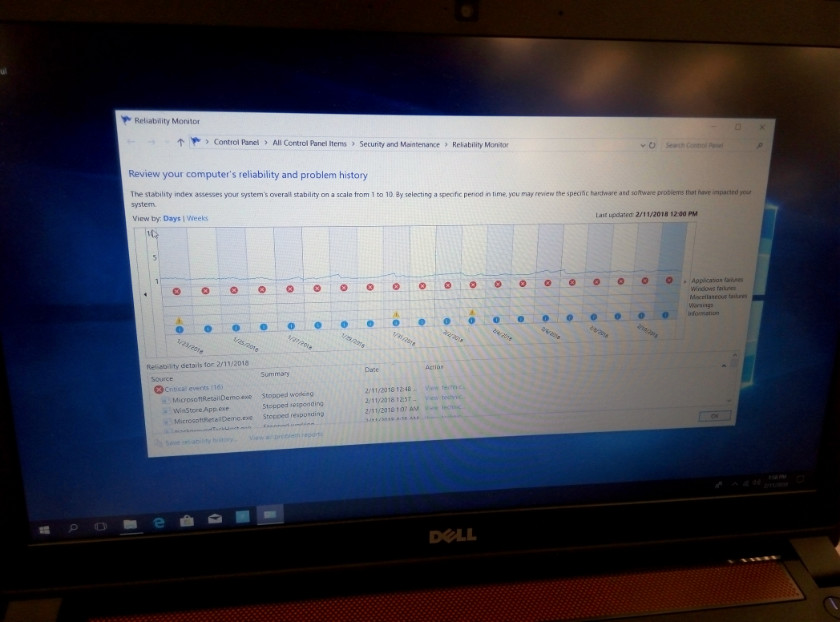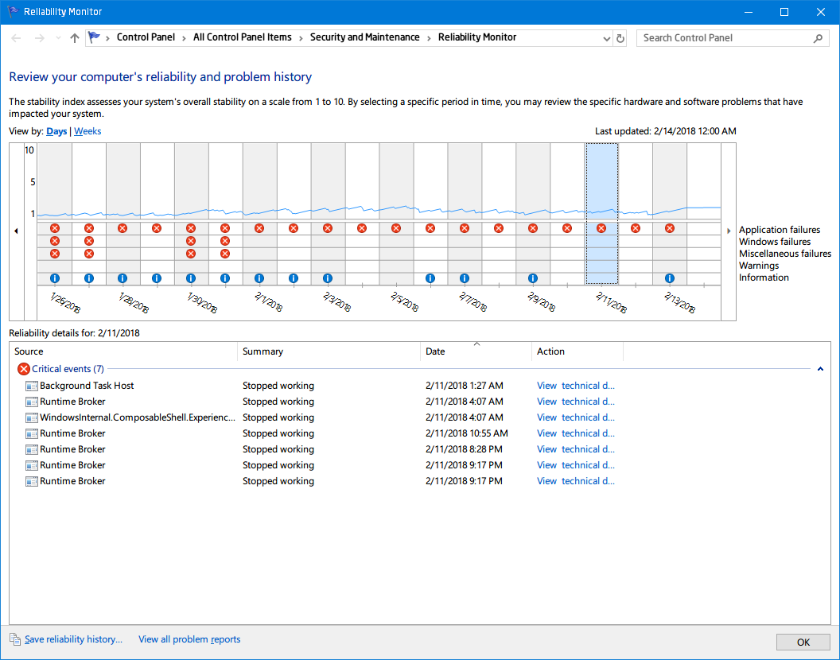As many of you know, between around December 8 and February 2—dates during which I had Microsoft Windows 10’s fall Creators update without the January 31 cumulative patch—my computer suffered roughly three to six BSODs per day. Going on to Bleeping Computer was helpful, but Microsoft’s wisdom tended to be hackneyed and predictable.
While I was lucky at Microsoft Answers and got a tech who wasn’t rehashing remarks from other threads, eventually he gave up and suggested I download the old spring Creators update, if that was the last version that was OK.
I never had the time, and on February 2, I got the cumulative patch and everything has been fine since.
It means, of course, that Microsoft had released a lemon at the end of 2017 and needed a big patch to deal with the problems it had caused. No word to their people on the forum though, who were usually left scratching their heads and concluding that the only option was a clean installation.
I had bet one of the techs, however, that there was nothing wrong with my set-up, and everything to do with the OS. We know Windows is no longer robust because of the QC processes Microsoft uses, with each team checking its own code. That’s like proofreading your own work. You don’t always spot the errors.
I said I could walk into any computer store and find that the display models were crashing as well.
Last weekend, I did just that.
Here are the Reliability Monitors of two Dell laptops running factory settings picked at random at JB Hi-fi in Lower Hutt.


Above: The Reliability Monitors of two display Dell laptops at JB Hi-fi in Lower Hutt, picked at random.

Above: My Reliability Monitor doesn’t look too bad by comparison—and suggests that it’s Microsoft, not my set-up, that was responsible for the multiple BSODs.
The Monitors look rather like my own, not scoring above 2 out of 10.
They are crashing on combase.dll for the most part, whereas mine’s crashing on ntdll.dll. Nevertheless, these are crashes that shouldn’t be happening, and a new machine shouldn’t have a reliability score that low.
For those of you who suspect you have done nothing wrong, that your computer has always worked till recently, and you practise pretty good computer maintenance, your gut’s probably right. The bugs aren’t your fault, but that of slapdash, unchecked programming. I doubt you need full reinstallations. You may, however, have to put up with the bugs till a patch is released. It is the folly of getting an update too early—a lesson that was very tough to relearn this summer.








One thought on “When Microsoft says your Windows 10 needs a reset or full reinstallation, they might be wrong”